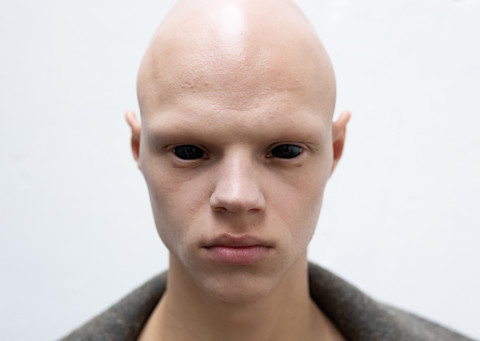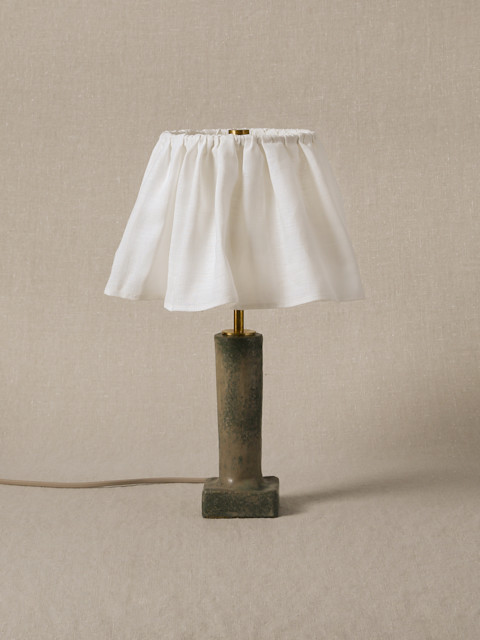Skin Care Enters Its Hyperoptimized Era
The trends, serums, and treatments on the rise for 2025 and beyond. Consider this a skin-care state of the union.

This past year in particular has been a real grab bag of skin-care buzzwords. Blame it on TikTok, or the beauty-industrial complex that fuels it, but the normalization of the phrase “salmon sperm facial” has to signal that new territory is being charted. From the glass skin obsession, to “vampire” facials, to tricked-out LED devices, it feels like the sheer quantity of skin-care information—and products—is at an all-time high.
Take, for instance, the pursuit of a healthy skin barrier, which is the outermost layer of skin that acts as a first line of defense against, well, everything. It wasn’t until a few years ago that enthusiasts like myself even knew what a “skin barrier” was. Now, we’re desperately trying to make up for lost time, stopping at nothing to find a serum rich enough in glycerin to moisturize us after years of overexfoliation.While the basics of beauty remain timeless—high-quality ingredients, sun protection, hydration—I’d like to think trends aren’t inherently bad. Sure, at worst, they can literally burn layers off your face. But I prefer to see skin-care trends through my rose-colored glasses.Where do we go from here? What products cut through the noise and have the potential to shape the future of this equal parts confusing and fascinating industry? Here’s what we discovered according to beauty experts, practitioners, and of course, my own observations as a semi-professional skin-care aficionado. A skin-care state of the union for 2025.

Nontoxic formulas with traceable, clinically studied ingredients are less a trend and more a baseline in our modern age of unlimited information. Consumers expect full transparency in their products as a bare minimum, which means brands have to position themselves as authorities in the space if they want to stand apart from their competitors. Enter: the doctor-led brand. Augustinus Bader and Dr. Barbara Sturm exude scientific credibility from their names alone, immediately reminding us of their histories as dermatological pioneers.“All of this comes back to trust,” says Emily Dougherty, a beauty director of over 15 years, currently at magazine. She recounts the shift that happened ten years ago when exfoliation was all the rage and people started to burn their skin off. “Even if price is no object, you still think before trying something new. So now there are extra layers of, ‘Do I trust this? Not just to work, but to not harm me or the world?’”With a doctor’s name in the product, we feel safe and confident knowing our skin is in the trusted hands of a medical professional, but the luster is starting to fade. “I think there is an oversaturation of doctor-founded brands,” says Daise Bedolla, beauty consultant and editor at . “I don’t want to say that they lose credibility, but I don’t necessarily look to them for that stamp.”“Clinical is such a big category in itself these days,” Dougherty adds. “So what makes [these types of brands] so powerful is that they have something more. It’s luxurious and clinical—it’s clinical plus.”That “plus” is an extra layer of trust. In 111SKIN’s case, its leading doctor, Yannis Alexandrides, and his history as a plastic surgeon at London’s 111 Harley Street give its products an edge. Not only are its brightening, tone-evening formulas inspired by his in-clinic treatments, but he actually began preferring them to his surgical procedures.Trust also comes in the form of transparency in sourcing and efficacy. “The average customer has gotten a lot more intelligent when it comes to ingredients, and they know to look for a clinical study,” says Bedolla. U Beauty, for instance, publishes its clinical information on its site, which shows it’s got nothing to hide.

In a similar vein, bold claims of “proprietary technology” aren’t cutting it anymore. “People are over the made-up ‘proprietary ingredients,’” says Elizabeth Grace Hand, esthetician and founder of Ställe Studios, a facial destination for New York’s chicest clientele. “We all know it’s a marketing gimmick.” What actually sets a “proprietary technology” apart is when its ingredients can speak for themselves. Augustinus Bader’s TFC8® (Trigger Factor Complex) comes to mind for Hand. Developed by professor Bader to heal traumatic wounds in burn victims, its blend of amino acids, vitamins, and peptides is widely respected.She also praises Bioeffect, a brand known for its anti-aging formulas using cutting-edge vegan EGFs (epidermal growth factors) derived from sustainably produced barley in their Icelandic greenhouse. While it sounds like marketing fluff, the people who know will tell you the products are the real deal. “The eye products are the standout,” says Dougherty. “If you try it, you use it, you love it, you don’t try anything else.”

Farm-to-table has hit the beauty counter. The ultimate flex as a skin-care brand is growing and harvesting your own ingredients for the most potent formula possible.Bioeffect’s geothermal barley is one example. In Switzerland, Valmont cultivates rosa moschata, echinacea, and buckthorn in its phyto-alpine garden for “premium quality extracts” to use in its formulas. Meanwhile, Furtuna Skin harvests its own olives in Italy as a base for its one-of-a-kind vitamin complexes.Owning all parts of the ingredients’ lifespan—from planting the seed to developing the formula—could be the final frontier for full-product transparency.

In the mid-aughts, skin-care routines hit their 12-step peak, thanks to K-beauty’s popularity. But during a global pandemic, when everyone became somewhat of a skin-care expert themselves, our eyes were opened to the damaging effects of overusing actives—not to mention the waste and cost that came with it.The new standard is high-impact products with minimal effort.The “less is more” ethos applies to individual regimens, but brands’ catalogs, too. “I think the brands that are going to succeed are the ones who have a very tight SKU,” says Bedolla, who points out U Beauty as a great example. Its claim to fame, the Resurfacing Compound, put its SIREN Capsule Technology on the map, and while it’s expanded to include cleansers and creams, it remains dedicated to simplicity. “There’s something to be said for offering variety,” Bedolla goes on, “but if you’re a brand that does one thing very, very well, that bodes very well for you.”La Reine Capricieuse, founded by actor Alexandre Styker, keeps a tight collection of just three cellular regeneration-focused products. The hero ingredient is a rare honey derived from black bees of the French Vosges, therefore “production is strictly limited because it depends on the fragile honey harvest and the slow cycles of the plants.” Quality reigns supreme over quantity, once again.

Products must perform—but they must also earn their shelf space, aesthetically speaking. The “shelfie” era, amplified by 2020’s extended hibernation, has only heightened demand for visually compelling, Instagram-worthy skin care.Bedolla, who writes and produces Top Shelves for Into the Gloss for a living, can absolutely attest. “I get a firsthand glimpse of the products that they’re excited to show off, and those that they want to hide because they’re not as ‘attractive’ or ‘interesting’ to look at, even though they’re used religiously.”German brand Herbar masters this balance with its mushroom-focused line. Its “Gua-Shroom” Face massager, made of striking dalmatian and tiger eye stone, mirrors the same material found in its oil caps, creating a seamless design language for the brand, as well as its customers’ bathrooms.Edition de Parfums Frédéric Malle and its urn-shaped body oils are a personal favorite of Dougherty’s. “[Malle] once told me that he doesn’t want his bathroom to look like Broadway—‘like a bunch of billboards . . . and products [that] fight to get your attention.’” As she wrote for ELLE, “these unostentatious beauty bottles let their contents speak for themselves.”

“It’s that holy grail notion,” says Dougherty. “If your skin’s really dry, no one’s going to argue with you that Crème de La Mer is something you shouldn’t try.” Legacy is legacy for a reason.We can all agree that The Rich Cream guarantees a hydrated glow, the Black Rose Cream Mask from Sisley-Paris will bring your skin back to life, and Clé de Peau Beauté’s Correcting Cream Veil is the gold standard for evening tone and texture.In 2025, skin care is optimized for the essentials: credibility, performance, and design. Turns out, the only thing more powerful than vanity is trust.
.




